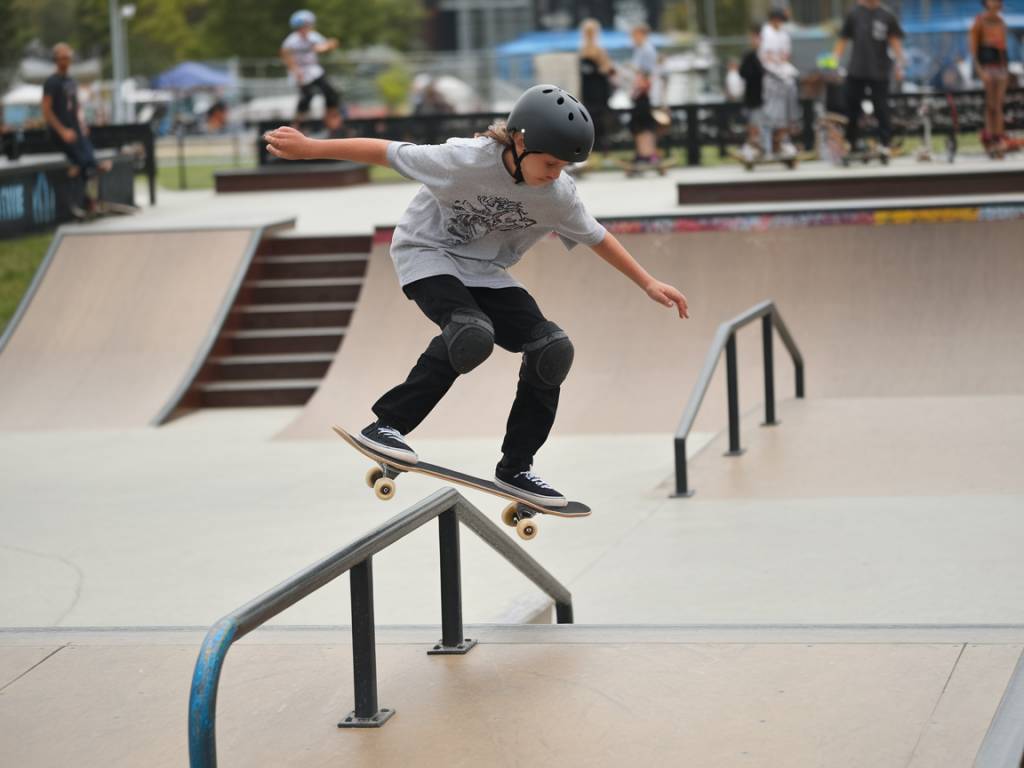Skateboarding isn’t just a sport. It’s a lifestyle, an art form, and, for many, a way of existing in the world. Its roots trace back to the streets of California in the 1950s, and while its origins were humble, what skateboarding has become is nothing short of iconic. Today, it’s a global phenomenon that speaks to the young, rebellious, and creative. But what exactly makes skateboarding impossible to ignore? Why does it resonate so strongly with youth culture? Let’s hop on this metaphorical deck and dive in.
Skateboarding as a Platform for Freedom
Skateboarding isn’t defined by rigid rules or strict boundaries. There’s no coach on the sidelines barking orders, no team strategy to follow. You carve your own path, you call the shots, and you take a hit when you fall. That’s the kind of freedom that appeals to young people, particularly when the pressures of school, family, or societal expectations can feel overwhelming.
It’s in this self-expression that skateboarding thrives. The flip tricks, spins, and slides — each skater has their own style, their own rhythm. It’s an art, painted not on canvases, but urban landscapes: curbs, railings, stairs, and abandoned pools. What other « sport » celebrates individuality to such a vibrant degree?
The Youth Magnet: Skateboarding Culture
Here’s the thing: skateboarding is as much about the culture as it is about the tricks. Walk into a skate park in any city around the world, and you’ll immediately feel it — the laid-back vibe, the camaraderie. Skaters celebrate each other’s successes and laugh off the spills. It’s a judgment-free zone where everyone is on their own journey, rolling and grinding toward personal milestones.
Then there’s the style. Skateboarding is inseparable from its influence on fashion. Oversized hoodies, baggy jeans, and those iconic skate shoes? They’ve gone from the halfpipe to the runway. Youth today gravitate toward this aesthetic not just for its cool factor but because it represents a counterculture spirit. It’s rebellious, it’s raw, and yes, it’s effortlessly cool.
A Global Skateboarding Phenomenon
The Olympics in 2020 proved something monumental: skateboarding isn’t just a street movement or a subculture anymore. It’s a sport recognized on a global scale. But here’s the kicker — even with its addition to such a structured stage, skateboarding hasn’t lost its edge.
For young skaters watching trailblazers like Sky Brown or Nyjah Huston compete, it’s inspiring. They see that skateboarding can be more than a passion; it can open doors to opportunities, sponsorships, and worldwide recognition. But at its core, skateboarding always remains personal. Even at the Olympic level, athletes are judged on creativity, spontaneity, and originality — values that are deeply ingrained in skateboarding’s DNA.
Skate Spots: Where the Adventure Begins
Every city hides its own skateboarding treasures. Ask any skater, and they’ll light up as they describe their favorite « spots. » From the rails outside the local library to hidden graffiti-covered halfpipes in industrial zones, these locations become central hubs for the skate community.
There’s also the joy of discovery. Skaters see the world differently — a humble park bench isn’t just for sitting; it’s a grind rail waiting to happen. Stairs aren’t just for climbing; they’re potential for an epic trick. This perspective transforms urban spaces into an endless playground, a reflection of skateboarding’s ability to inject creativity and fun into the mundane.
Skateboarding and Mental Resilience
Ever thought of skateboarding as a life lesson in resilience? Each trick comes with countless failed attempts, bruised knees, and probably more than a few muttered curses. But for those who stick with it, the reward is worth every tumble. That’s where the magic happens — perseverance transforms frustration into triumph.
For young people, especially in a world that often feels overwhelmingly fast-paced and competitive, skateboarding can be a grounding force. The act of learning, falling, and getting back up builds mental toughness. It’s a raw, no-frills way of reminding yourself that failure isn’t fatal — it’s just another step toward success.
The Rise of Female Skateboarders
There was a time when skateboarding was viewed as a male-dominated space. Not anymore. Female skaters are shredding stereotypes and proving that the half-pipe belongs to everyone. Skaters like Leticia Bufoni and Lizzie Armanto are not just household names; they’re role models inspiring young women to pick up a board for the first time.
Social media has been a game-changer here. Platforms like Instagram and TikTok are filled with incredible content from female skaters who are showcasing their skills, breaking down barriers, and building inclusive communities where everyone has a place.
How to Start Skateboarding
Thinking about joining the movement? Here’s the thing: you don’t need to be an adrenaline junkie or a born daredevil. Anyone can learn to skate. The key is to start small.
- Get the right gear: A good board, quality skating shoes, and, yes, don’t skip on the safety gear. Helmets and pads aren’t an afterthought; they’re lifesavers.
- Find your spot: Check out local skate parks, empty parking lots, or even an open patch of sidewalk. You don’t need fancy equipment to start.
- Learn the basics: Focus on balance and controlling your board before attempting tricks. A steady ollie is the foundation of skateboarding skills.
- Join the community: Don’t be shy to reach out to fellow skaters. They’re usually more than happy to share tips, tricks, and encouragement — and maybe even show you a thing or two.
More Than a Sport
Skateboarding isn’t just about perfecting your kickflip or cruising through the streets; it represents something bigger. It’s about finding freedom, building resilience, and discovering a community that values authenticity over conformity. Whether you’re a skater or just someone curious about this dynamic culture, one thing’s for sure — skateboarding isn’t going anywhere anytime soon. After all, the world looks better when seen from the deck of a skateboard.
